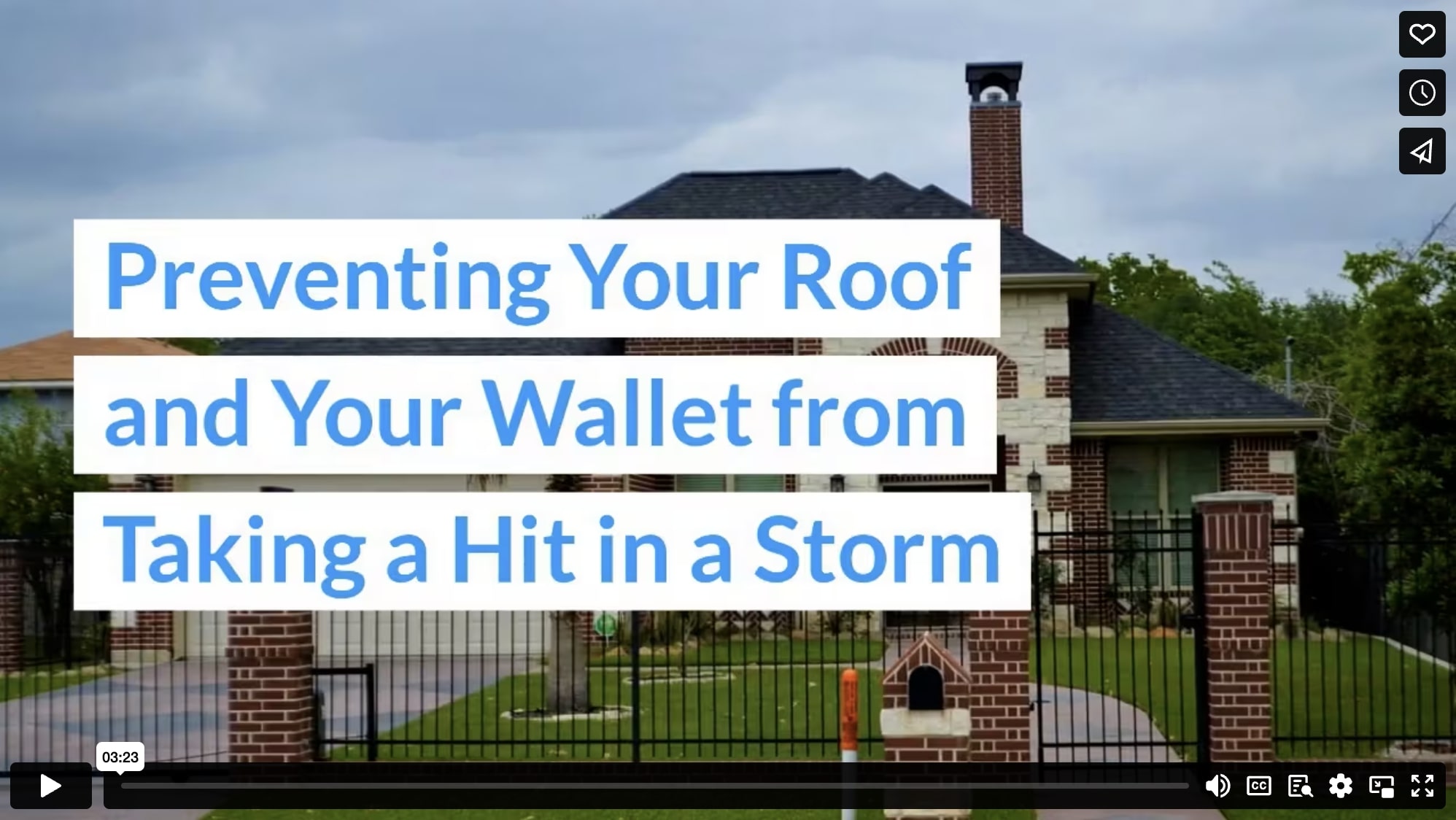By the time there is a water spot on your ceiling or rain has lifted the shingles on your roof, it is too late to avoid a costly roof repair. But you don’t have to be at the mercy of nature. Being proactive can be the difference between your roof surviving a weather event or needing costly repairs or even total replacement. Taking these seven steps before bad weather arrives can prevent damage and keep your home safe.
1. Look Up!
Go out and look at your roof. You don’t need to be a roofing contractor to spot some of the signs of trouble. Look for curled or missing shingles, as well as any lumps or depressions on the roof’s surface. Also check to make sure gutters and siding are property attached. If anything looks off, schedule an inspection. It is especially important to do this before the start of any severe weather seasons. If you are dealing with roofing in Utah, perform a thorough inspection before the first snow. In Florida, you’ll want to make sure everything looks solid before the start of hurricane season.
2. Branch Out
Trim any tree branches that touch or hang over your roof. If they break off in a storm, they could severely damage your roof and even cause injury to someone in the home. Even if they don’t break, heavy winds could cause them to brush against the roofing materials, causing damage or shortening the lifespan of your roof. Make sure there is plenty of clearance between your home and your trees.
3. Clean Out the Gutters
To prevent water overflow, clean out your gutters. You can perform this work yourself or hire a company to do it. Remove all debris from the gutters and consider adding a gutter guard that keeps out falling materials. While you are working on the gutters, check to make sure they are securely attached and do a visual check of the soffit and fascia for anything that doesn’t look right.
4. Secrets in the Attic
If your home has an attic, go up and inspect the space for signs of previous water damage. Dark spots, dampness, or mold are all signs of trouble. It’s best to find these and address them before the next storm does even more damage to both the roof and your home’s interior.
5. In the Clear
Clear debris from your yard. Remove or secure items like lawn décor or outdoor furniture. These items can become projectiles in high winds, making them threats to your roof, as well as to the rest of your home.
6. Snow Day
If you can safely do so, remove some of the snow from your roof. The weight of a significant snowfall can damage the supports that hold your roof. Having that wet mass sitting against your roof as it melts also presents opportunities for water to work its way under shingles.
Also, eliminate icicles where possible. They can put a stain on gutters and have a damming effect, causing even larger dams to build up behind them. This adds to the weight of the snow and ice on your roof. Don’t risk your safety to do so, but removing snow and ice can prevent water intrusion, ice dams, and even roof collapse.
7. Bring in the Professionals
One of the best ways to prevent damage is to spot and address problems before they grow. A trusted roofing contractor knows what to look for. They will find minor damage and address it before it becomes a major headache, and before severe weather makes it even worse.
Extreme weather can ask a great deal of your roofing materials. Help them provide the best protection possible to your home by ensuring everything is in good condition before the weather hits. Then sit back with a cup of hot chocolate and watch the snow fall or sip lemonade and listen to the wind blow with confidence that the weather will stay where it belongs: outside.
Infographic
When inclement weather comes your way, there is nothing more important than protecting your home and loved ones. One of the best ways to do that is by keeping your roof in good condition. It is not simply acting only upon seeing that a branch has fallen from a tree and landed on your roof. It would help if you took preventive measures before stormy weather to have some peace of mind. The infographic below will guide you through what you can do right now to secure your roof and home.

Video

